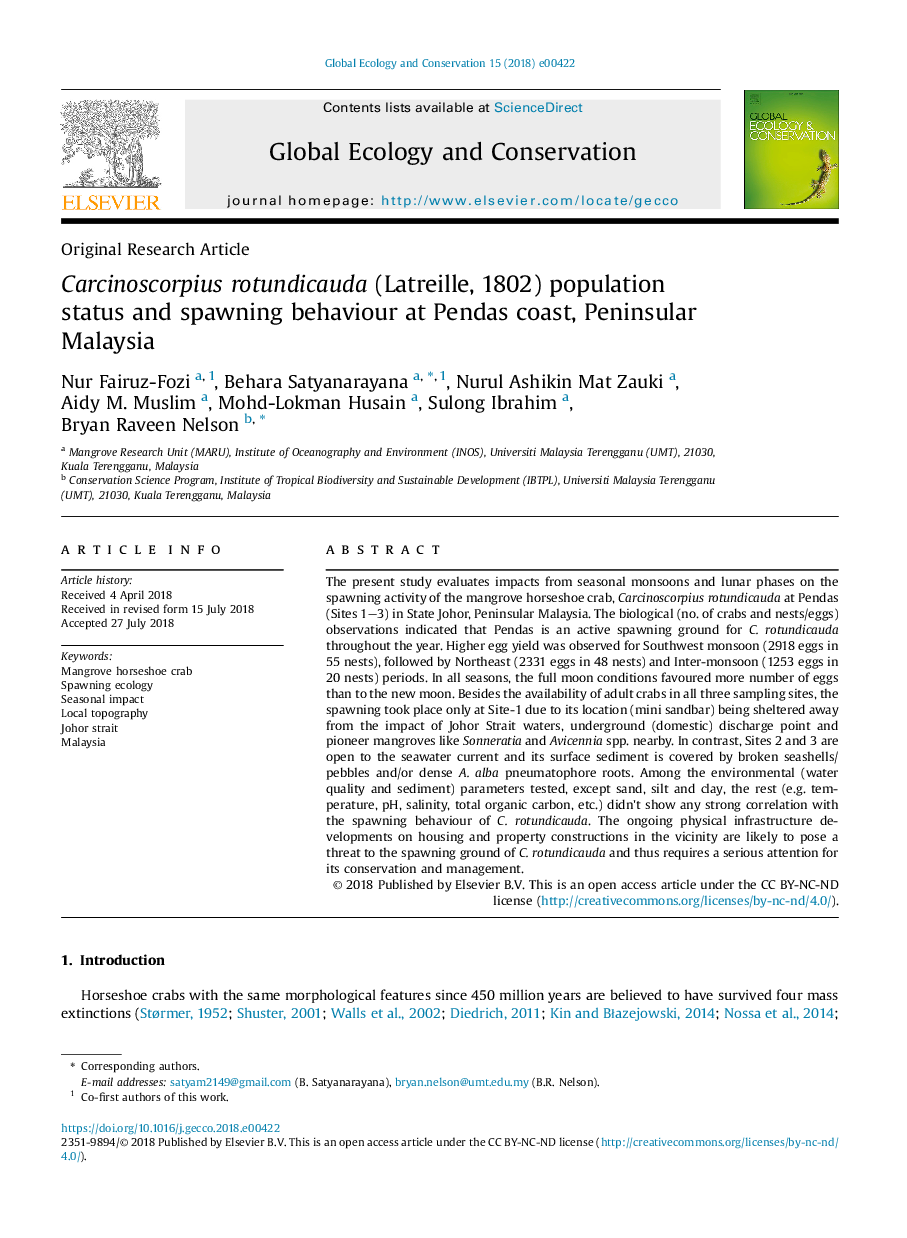| Article ID | Journal | Published Year | Pages | File Type |
|---|---|---|---|---|
| 8846193 | Global Ecology and Conservation | 2018 | 8 Pages |
Abstract
The present study evaluates impacts from seasonal monsoons and lunar phases on the spawning activity of the mangrove horseshoe crab, Carcinoscorpius rotundicauda at Pendas (Sites 1-3) in State Johor, Peninsular Malaysia. The biological (no. of crabs and nests/eggs) observations indicated that Pendas is an active spawning ground for C. rotundicauda throughout the year. Higher egg yield was observed for Southwest monsoon (2918 eggs in 55 nests), followed by Northeast (2331 eggs in 48 nests) and Inter-monsoon (1253 eggs in 20 nests) periods. In all seasons, the full moon conditions favoured more number of eggs than to the new moon. Besides the availability of adult crabs in all three sampling sites, the spawning took place only at Site-1 due to its location (mini sandbar) being sheltered away from the impact of Johor Strait waters, underground (domestic) discharge point and pioneer mangroves like Sonneratia and Avicennia spp. nearby. In contrast, Sites 2 and 3 are open to the seawater current and its surface sediment is covered by broken seashells/pebbles and/or dense A. alba pneumatophore roots. Among the environmental (water quality and sediment) parameters tested, except sand, silt and clay, the rest (e.g. temperature, pH, salinity, total organic carbon, etc.) didn't show any strong correlation with the spawning behaviour of C. rotundicauda. The ongoing physical infrastructure developments on housing and property constructions in the vicinity are likely to pose a threat to the spawning ground of C. rotundicauda and thus requires a serious attention for its conservation and management.
Keywords
Related Topics
Life Sciences
Agricultural and Biological Sciences
Ecology, Evolution, Behavior and Systematics
Authors
Nur Fairuz-Fozi, Behara Satyanarayana, Nurul Ashikin Mat Zauki, Aidy M. Muslim, Mohd-Lokman Husain, Sulong Ibrahim, Bryan Raveen Nelson,
